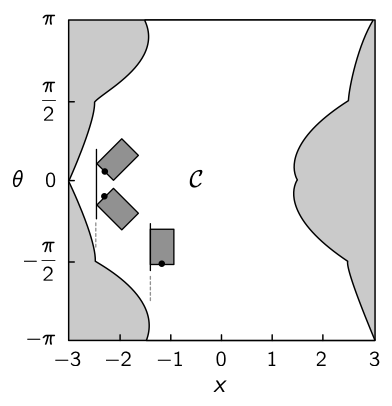CDS270-2: Mathematical Methods in Control and System Engineering (Caltech)

- Instructor: Ivan Papusha
- Lectures: MW 1–1:55pm, 243 Annenberg
- Units: 2–0–4
- Office Hours: after class, or by appointment
Introduction
This is the webpage for a new special topics course targeting graduate students and advanced undergraduates in engineering and applied math fields.
Announcements
- The first class will meet on Mon, Mar 30, 2–2:55pm (243 Annenberg). We will determine the class schedule at that time. If you wish to take the course for credit, please sign up with Caltech’s Access: choose CDS270, section 2.
- If you are planning on attending lectures, please fill out the preferred times poll before Tue, Mar 31.
- Homework 1 is due on Wed, Apr 8.
- Homework 2 is due on Wed, Apr 15.
- Homework 3 is due on Wed, Apr 22.
- The lecture on Wed Apr 22 is moved to 2–2:55pm, 243 Annenberg.
- Homework 4 is due on Wed, Apr 29.
- Homework 5 is due on Wed, May 6.
- Homework 6 is due on Wed, May 13. Make sure your problem catalog has date stamp ≥ 05/06/2015. For part #3(d), it is recommended to use Matlab and CVX. Refer to the SDP mode documentation.
- Homework 7 is due on Wed, May 20.
- Homework 8 (last one) is due on Wed, May 27.
- No class (Memorial day) on Mon, May 25.
- There is no midterm or final.
Course Description
The course will develop both a theoretical and a practical knowledge of Lyapunov theory and robust control as they pertain to modeling, analyzing, optimizing, and controlling dynamical systems from application areas in electrical systems, circuits, mechanical systems, robotics, and networks. We will highlight computational tools from convex optimization, particularly Linear Matrix Inequalities (LMIs) and semidefinite programming (SDP), as a unifying language in classical and modern control of linear systems. If time allows, we will make the jump to the rich area of nonlinear systems and path planning.
To fully appreciate the course material, students should have some level of mathematical sophistication, including a working knowledge of linear algebra, real analysis, and facility with MATLAB. A background in convex optimization (ACM 113) and/or control theory (CDS 112) will be helpful, but not required.
Lectures
- Introduction
- Linear systems
- Lyapunov theory
- Convex optimization and duality
- Dynamic programming and LQR
- Linear matrix inequalities
- LMI approaches to H2, H∞ problems
- Applications
- Numerical techniques
Additional notes
Assignments
The final grade is tentatively based on
- 50% homework
- 50% attendance/participation
Homework
Each homework assignment consists of a combination of theoretical and computational problems, many of which can be freely chosen by the student from an ever-expanding catalog of problems.
CYOA means “choose your own adventure”—do the assigned problem, or any other problem from the catalog that you haven’t done:
| HW | Reading | Catalog exercises | Solution | Due |
|---|---|---|---|---|
| 1 | BV, Appendix A | #1 | – | Wed Apr 8 |
| 2 | lmibook, Ch 1–2 | #11 or CYOA | – | Wed Apr 15 |
| 3 | lmibook, Ch 1–2 | #2 or CYOA | – | Wed Apr 22 |
| 4 | BV, Ch4–5 | #4 or CYOA | – | Wed Apr 29 |
| 5 | Bertsekas, Ch 1 | #13 or CYOA | – | Wed May 6 |
| 6 | lmibook, Ch 4–6 | #3 or CYOA | – | Wed May 6 |
| 7 | lmibook, Ch 7 | #12 or CYOA | – | Wed May 7 (drop day) |
| 8 | Davis, Ch 1–3 | #19 or CYOA | – | Wed May 27 (last day of class) |
References
All lecture notes will be provided in class and made available online. We will use material and readings adapted from the following texts:
- [lmibook] S. Boyd, L. El Ghaoui, E. Feron, and V. Balakrishnan. Linear Matrix Inequalities in System and Control Theory, SIAM, 1994.
- [BV] S. Boyd, L. Vandenberghe. Convex Optimization. Cambridge University Press, 2004.
- S. Boyd. EE363: Linear Dynamical Systems. course notes.
- [Bertsekas] D. Bertsekas. Dynamic Programming and Optimal Control. Athena Scientific, 2005.
- S. LaValle. Planning Algorithms. Cambridge University Press, 2006.
- G. E. Dullerud, F. Paganini. A Course in Robust Control Theory: A Convex Approach. Springer, 2000.
- [Davis] T. A. Davis. Direct Methods for Sparse Linear Systems. SIAM, 2006.